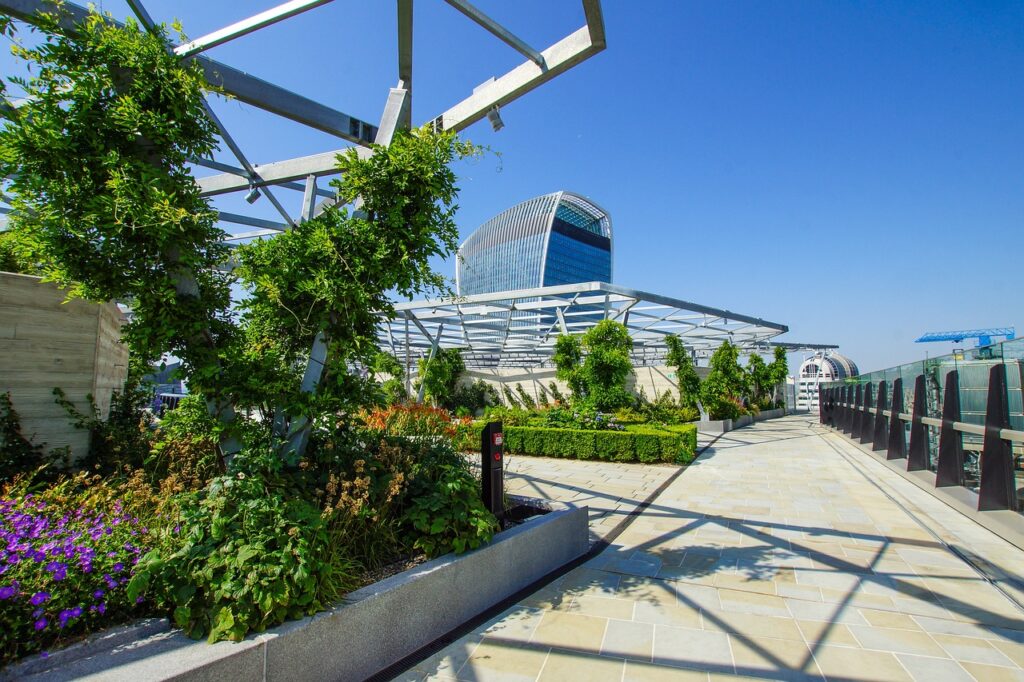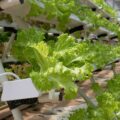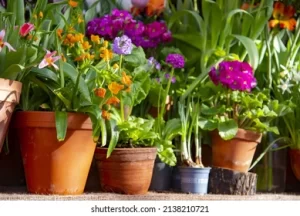
Urban gardening has become increasingly popular in recent years. As people look for ways to bring nature into their lives and make their city homes more inviting, growing a rooftop garden is becoming an attractive option. Whether you live in an apartment in the city or a house with a flat roof, growing a rooftop garden is a great way to bring a little bit of nature into your home. In this blog article, we will explore everything you need to know about growing a vibrant rooftop garden.
Introduction to Rooftop Gardening
Rooftop gardening is a method of gardening on rooftops and other elevated surfaces. This type of gardening is becoming increasingly popular as people look for ways to bring nature into their urban lives. Rooftop gardening can be an enjoyable and rewarding hobby, and it can also have a positive effect on the environment.
The benefits of rooftop gardening are numerous. Not only do rooftop gardens provide a beautiful view, they can also help reduce energy costs by providing shade and insulation. Additionally, rooftop gardens can improve air quality by filtering pollutants and providing oxygen. Finally, rooftop gardens can help reduce stormwater runoff, which can help prevent flooding and erosion.
Benefits of Urban Rooftop Gardening
Rooftop gardening provides numerous benefits for urban dwellers. First and foremost, it can provide an escape from the hustle and bustle of city life. By growing plants on your roof, you can create a tranquil oasis in the midst of the city. Additionally, rooftop gardens can provide a place to relax and host outdoor gatherings with family and friends.
Rooftop gardens can also provide a variety of edible benefits. By growing your own fruits, vegetables, and herbs, you can save money on groceries and enjoy the freshest produce available. Additionally, rooftop gardens can provide a habitat for beneficial insects, such as bees, butterflies, and beneficial predatory insects, which can help control pests in your garden.
Finally, rooftop gardens can provide a variety of aesthetic benefits. By adding plants, you can transform your rooftop into a beautiful and vibrant space. Additionally, rooftop gardens can provide a unique and eye-catching view to enjoy from inside your home.
Considerations Before Starting a Rooftop Garden
Before starting a rooftop garden, there are several considerations that should be taken into account. First and foremost, you should ensure that your roof is structurally sound and can support the weight of the plants and materials. Additionally, you should check with local regulations to ensure that rooftop gardens are allowed in your area.
You should also consider the amount of sunlight your rooftop receives. Different plants require different amounts of sunlight, so you should choose plants that are suited to the amount of sunlight your rooftop receives. Additionally, you should consider the amount of water your plants will need. Depending on the type of plants you are growing, you may need to install irrigation systems or use other methods to ensure your plants get enough water.
Finally, you should consider the type of soil you will be using. Different plants have different soil requirements, so it is important to choose the right type of soil. Additionally, you should consider whether you will be using organic or synthetic fertilizers to ensure that your plants get the nutrients they need.
Designing and Planning a Rooftop Garden
When designing and planning your rooftop garden, there are several factors to consider. First, you should decide on the overall look and feel of your garden. Do you want a formal garden, a wild garden, or something in between? Additionally, you should consider the type of plants you will be growing. Different plants have different needs, so it is important to choose plants that will thrive in your climate.
Next, you should consider how you will arrange the plants. You should consider the size and shape of your roof, as well as the available space. Additionally, you should consider how you will access the plants for maintenance and care. Finally, you should consider the type of containers you will be using. Depending on the type of plants you are growing, you may need to use large containers or raised beds.
Types of Rooftop Plants to Grow
When choosing plants for your rooftop garden, there are a variety of types to consider. Herbs, vegetables, and flowering plants are all suitable for rooftop gardens. Additionally, some trees and shrubs can also be grown on rooftops, depending on the size of your garden and the amount of sunlight it receives.
If you are looking to grow edible plants, there are a variety of fruits and vegetables that are suitable for rooftop gardens. Tomatoes, peppers, and eggplants are all great options. Additionally, you can grow herbs such as basil, oregano, and rosemary. If you are looking for flowering plants, you can try growing sunflowers, roses, and lavender.
Finally, if you are looking to add trees and shrubs to your rooftop garden, you should consider dwarf varieties. Dwarf fruit trees, such as apple and cherry, are great options. Additionally, you can try growing dwarf evergreens, such as juniper and cedar.
Tools and Supplies for Rooftop Gardening
When starting a rooftop garden, there are several tools and supplies that you will need. First, you will need containers for your plants. Depending on the type of plants you are growing, you may need to use large containers, raised beds, or hanging baskets. Additionally, you will need soil, fertilizer, and tools for planting and maintenance.
You will also need supplies for watering your plants. If you are using containers, you will need to invest in a watering can or hose. If you are using raised beds, you may need to install an irrigation system. Additionally, you may need to invest in a ladder or other tools for reaching your plants.
Finally, you will need supplies for protecting your plants. Depending on the type of plants you are growing, you may need to invest in shade cloth or other materials to protect them from the sun’s rays. Additionally, you may need to invest in plant covers or other materials to protect your plants from wind and rain.
Maintenance and Care for Rooftop Gardens
Maintaining and caring for your rooftop garden is an important part of ensuring it stays healthy and vibrant. Depending on the type of plants you are growing, you may need to provide regular watering, pruning, and fertilizing. Additionally, you should regularly check your plants for pests, diseases, and other issues.
Additionally, you should regularly inspect your containers and raised beds to ensure they are in good condition. You should also inspect your plants for signs of pests and diseases. Finally, you should inspect your ladder and other tools to ensure they are in good working condition.
Tips for Growing a Thriving Rooftop Garden
When growing a rooftop garden, there are several tips that can help ensure it thrives. First, you should choose plants that are suited to the amount of sunlight and water your rooftop receives. Additionally, you should ensure that your containers and raised beds are in good condition.
You should also provide regular maintenance and care for your plants. Regular watering, pruning, and fertilizing are essential for keeping your plants healthy. Additionally, you should monitor your plants for pests and diseases, and take steps to address any issues as soon as possible.
Finally, you should use the right tools and supplies for your rooftop garden. Investing in quality tools and supplies can ensure your garden thrives and make it easier to care for your plants. Additionally, you should make sure to use the right type of soil and fertilizers to ensure your plants get the nutrients they need.
Pests, Diseases, and Other Challenges
Pests, diseases, and other issues can be a challenge when it comes to rooftop gardening. The best way to protect your plants is to regularly inspect them for signs of pests and diseases. Additionally, you should take steps to address any issues as soon as possible.
If your plants are affected by pests or diseases, you should take steps to identify the cause and take steps to address it. Additionally, you should take steps to prevent future issues. This may include using insecticides, fungicides, or other treatments.
Finally, you should be aware of certain challenges that come with rooftop gardening. This includes strong winds, extreme temperatures, and other environmental factors. Additionally, you should take steps to protect your plants from these factors. This may include using shade cloths or other materials to protect your plants from the sun’s rays.
Conclusion
Rooftop gardening can be a rewarding and enjoyable experience. Not only can it provide an escape from the hustle and bustle of city life, it can also provide numerous benefits, including improved air quality, reduced stormwater runoff, and fresh fruits and vegetables. Additionally, rooftop gardens can provide a beautiful and vibrant view from inside your home.
When growing a rooftop garden, there are several considerations to take into account, including the structural soundness of your roof, the amount of sunlight it receives, and the type of plants you will be growing. Additionally, you will need the right tools, supplies, and materials for your garden. Finally, you should take steps to protect your plants from pests, diseases, and other environmental factors.
If you are looking for tips and ideas for your rooftop garden, visit https://floweringplants.org/ for all your gardening needs. With the right planning and care, you can create a vibrant and thriving rooftop garden that will provide years of enjoyment.







